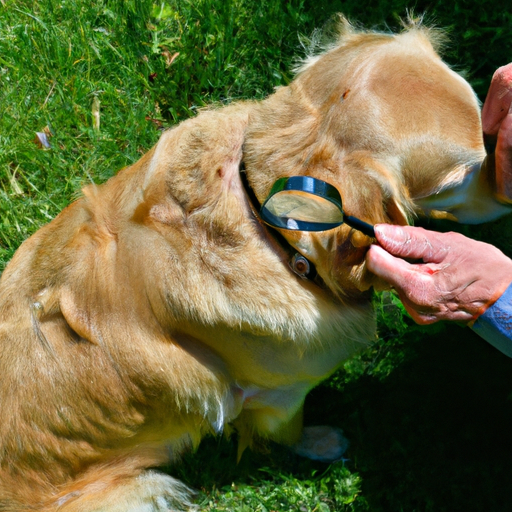Ticks are a common problem for dogs, especially those that spend a lot of time outdoors. These tiny parasites can carry diseases that are harmful to both dogs and humans. As a caregiver, it’s important to regularly check your dog for ticks and know how to remove them. Here’s a detailed guide on how to check dogs for ticks.
H2: Why It’s Important to Check Your Dog for Ticks
Ticks are not just a nuisance. They can transmit serious diseases such as Lyme disease, anaplasmosis, and ehrlichiosis. Regular tick checks can help protect your dog from these diseases and keep them healthy. If left unnoticed, a tick can feed on your dog for up to several days, which increases the risk of disease transmission.
Remember, the sooner you detect and remove a tick, the better.
H2: When to Check Your Dog for Ticks
Dogs should be checked for ticks:
- After walks in wooded or grassy areas
- During tick season (spring, summer, and fall)
- After spending time with other dogs
It’s essential to check your dog regularly, even if they are on a tick preventive. These products can fail, and no method is 100% effective.
H2: How to Check Your Dog for Ticks
Follow these steps to check your dog for ticks:
- Start with a visual check: Run your hands over your dog’s body, feeling for small bumps. Pay attention to the ears, neck, skin folds, and other hidden areas.
- Use a comb: A fine-toothed comb can help detect ticks in your dog’s fur.
- Check the skin: Part your dog’s fur and inspect the skin for ticks. They may look like small black or brown dots.
You can use a flashlight or magnifying glass to help identify ticks.
H2: How to Remove a Tick from Your Dog
If you find a tick on your dog, follow these steps to safely remove it:
- Protect your hands: Wear gloves to protect yourself from potential infection.
- Use tick removal tools: A tick twister or tweezers can be used to grip the tick without crushing it.
- Pull the tick straight out: Do not twist or jerk the tick as this can cause parts of it to remain in the skin.
- Clean the area: Use soap and water, then apply an antibiotic ointment.
- Dispose of the tick: Do not crush the tick with your fingers. Instead, put it in alcohol, a sealed bag, or flush it down the toilet.
H2: Frequently Asked Questions
Q: How often should I check my dog for ticks?
A: During tick season, it’s best to check your dog daily, especially after they’ve been outside.
Q: Can I use tweezers to remove a tick?
A: Yes, but be careful not to squeeze the tick’s body, which can cause it to release more saliva into your dog.
Q: What should I do if my dog has been bitten by a tick?
A: Remove the tick as soon as possible and clean the area. If your dog shows signs of illness, contact your vet immediately.
Q: Can ticks survive after being removed from a dog?
A: Yes, they can. It’s best to kill the tick by putting it in alcohol or flushing it down the toilet.
Q: Should I save the tick for testing?
A: If your dog becomes ill, it can be helpful to have the tick tested for diseases. Keep it in a sealed bag or container with a moist tissue.
Stay vigilant and proactive in checking your dog for ticks. It’s your best defense against the diseases these parasites can carry.



